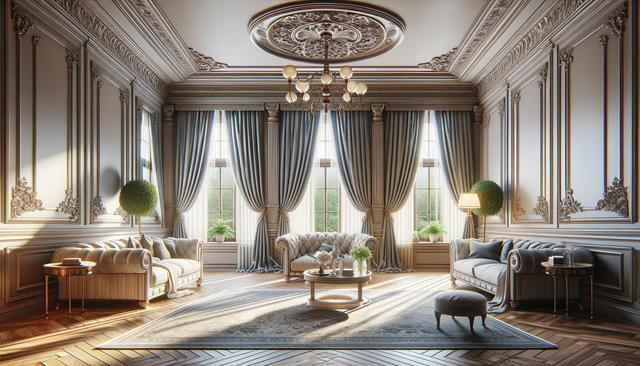
Transform Your Space: A Guide to Window Treatment Options
Understanding the Purpose of Window Treatments
Window treatments are more than just decorative elements; they serve multiple practical purposes in a home or office. From controlling light levels to enhancing privacy and improving energy efficiency, choosing the right type of treatment can significantly impact your space. Options range from simple curtains to more complex layered solutions, each offering unique benefits based on your needs.
Practical functions of window treatments include:
- Light control: Adjust natural light entering the room.
- Privacy: Prevent visibility into your space from the outside.
- Insulation: Help maintain indoor temperatures by reducing heat gain or loss.
- Sound dampening: Soften outside noise for a quieter environment.
Understanding these functions helps you make informed decisions when selecting the right treatment for different rooms. For example, a blackout curtain may be ideal for a bedroom, while sheer panels might suit a living room where natural light is welcome.
Types of Window Treatments Available
There are various types of window treatments, each offering distinctive features and aesthetics. The main categories include blinds, shades, curtains, drapes, and shutters. Each type can be tailored to fit different design preferences and functional requirements.
Some popular options include:
- Blinds: Made of wood, vinyl, or metal, blinds offer precise light control through adjustable slats.
- Shades: Fabric-based and available in styles like Roman, roller, or cellular for a softer look.
- Curtains: Lightweight and versatile, often used for decorative layering.
- Drapes: Heavier than curtains, ideal for insulation and formal settings.
- Shutters: Permanent fixtures offering a classic aesthetic and robust durability.
Choosing the right type depends on your priorities—whether they are style, light control, or insulation. Layering multiple treatments can also enhance both appearance and performance.
Choosing Materials and Colors
The material and color of your window treatment significantly influence the room’s overall look and functionality. Material choices range from natural fibers like cotton and linen to synthetic options such as polyester and vinyl. Each has its own benefits—natural fabrics offer breathability and elegance, while synthetics provide durability and easy maintenance.
When selecting materials, consider:
- Durability: High-traffic areas may benefit from stain-resistant fabrics.
- Light filtering: Heavier materials block more light, while sheer fabrics allow a soft glow.
- Maintenance: Machine-washable or easy-to-clean options save time in busy households.
Color choice should complement the existing decor and enhance the room’s ambiance. Lighter shades can make a room feel spacious and airy, while darker tones add warmth and intimacy. Neutral colors are versatile and timeless, making them a safe choice for most interiors.
Measuring and Installation Tips
Accurate measurements are crucial for a polished and functional result. Whether you opt for inside or outside mount installations, taking precise measurements ensures your window treatments fit seamlessly and operate smoothly. Incorrect sizing can result in gaps that compromise privacy and light control.
Here are a few measurement tips:
- Measure the width and height of the window at multiple points to account for irregularities.
- Decide whether the treatment will be mounted inside the window frame or outside for a more dramatic effect.
- Allow extra length if you prefer a puddled fabric look for curtains or drapes.
Installation methods vary depending on the type of treatment. While some options are easy to install with basic tools, others may require professional help, especially if they involve custom fittings or complex hardware. Always follow manufacturer instructions or consult a specialist if unsure.
Maintaining Your Window Treatments
Proper maintenance extends the life of your window treatments and keeps them looking their best. The care routine depends largely on the material and construction. Regular cleaning and occasional deep cleaning help prevent dust buildup and fabric discoloration.
General tips include:
- Vacuum fabric treatments using a brush attachment to remove dust.
- Spot-clean stains using mild detergent and a soft cloth.
- Check labels for washing instructions—some curtains and shades are machine washable, while others require dry cleaning.
- For blinds and shutters, use a microfiber cloth or specialized cleaner to wipe each slat individually.
Regular inspection can also help identify issues like fading, fraying, or mechanical problems early, allowing for timely repairs or replacements. Investing in high-quality materials and following proper care guidelines ensures your treatments remain functional and stylish for years to come.